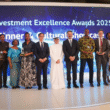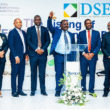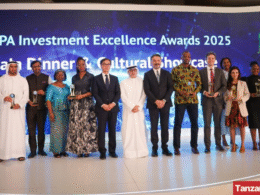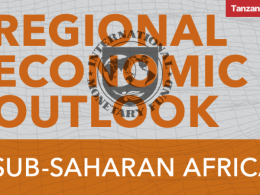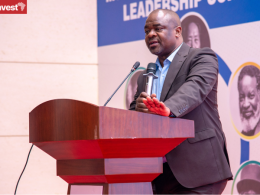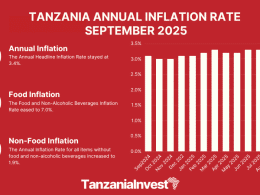TanzaniaInvest had the pleasure to interview Tonia Kandiero, Resident Representative in Tanzania of the African Development Bank (AfDB). Kandiero discusses AfDB’s past, present and future in Tanzania and the USD1.1 bn assistance package for Tanzania approved in 2016.
ACHIEVEMENTS
AfDB CSP 2011-15 for Tanzania was articulated around two strategic pillars: (1) infrastructure development focusing on transport, agriculture, water and energy, and (2) governance with emphasis on the enabling institutional and business environment.
However the recently approved AfDB Country Strategy 2016-10 for Tanzania, indicate that despite the country sustained economic growth, it is still struggling in translating this into economic transformation, faster poverty reduction and improvement in the livelihoods of its population.
TanzaniaInvest: How would you describe the overall achievement in Tanzania of the AfDB CSP 2011-15?
Tonia Kandiero: The Bank recorded significant achievements in Tanzania during the CSP 2011-15 period, including: the upgrading of more than 777 km of road to bitumen standard and rehabilitation of more than 31,000 water points serving about 8.8 million people in rural areas; construction and rehabilitation of more than 50 market facilities; and the training of hundreds of microfinance borrowers, health workers, farmers’ facilitators and 11,000 farmer groups.
Other achievements consist of the construction of 2,500 micro infrastructure facilities such as grain milling stations and cattle dips and over 100 Vocational Education Training Authority (VETA) and health facilities.
Also, the Bank’s operations facilitated the connection of 612,890 new customers to the national grid and more than 100,000 people gained access to micro-credit, 50 percent being women borrowers.
TI: Which lessons has AfDB learned on how to maximise AfDB’s impact in Tanzania?
TK: The key lessons and experiences that were drawn from the previous CSP to maximize AfDB’s impact in Tanzania include the following: (a) an impartial approach to country dialogue enhances the Bank’s role as a trusted and honest broker; (b) complementarity of lending and non-lending activities (which include analytical work, advisory services and technical assistance) is key for subsequent effectiveness of operations, (c) coherence and synergy of the Bank’s assistance program with Government led initiatives, increases visibility and fast-tracks implementation progress; (d) high project quality-at-entry expedites implementation progress and delivery of development results for Bank operations, and; (e) selectivity with a focus on fewer but big and catalytic transformative interventions will increase the alignment of the Bank’s assistance program, and maximize the overall development impact.
TRANSPORT AND ENERGY
TI: Transport and energy have been identified by the Government of Tanzania as the key growth binding constraints. On line with that, transport and energy currently for 49% of AfDB’s on-going portfolio for Tanzania. What are the priority projects?
TK: The projects include: Road Sector Support Project (Phases I and II); Dar es Salaam Bus Rapid Transit Project; Arusha-Holili/Taveta-Voi Road Project; Electricity V project; Kenya- Tanzania Interconnection; and Rusumo Hydropower Project.
INFRASTRUCTURE
TI: According to AfDB, given the size of the Tanzanian economy, more investment in infrastructure is needed to achieve sustainable economic transformation. How such additional investment is to be achieved?
TK: Financing of infrastructure investment in Tanzania has, in the past, been largely through concessional resources both from Multilateral and Bilateral Development Partners.
However, following the recent revision of Bank’s credit policy, Tanzania can now access semi-concessional resources from the African Development Bank (ADB window).
This will significantly help to reduce the infrastructure financing gap.
Also, the Government of Tanzania is in the process of securing credit rating, which will enable the authorities to borrow on commercial terms from the international financial markets (Eurobond).
TI: How is the remaining 51% of AfDB budget for Tanzania being used?
TK: The remaining 51% of the Bank’s commitment for Tanzania is in: Public Financial Management Reforms (through General Budget Support operation, and Institutional Support Project for good governance); Marketing infrastructure to support agriculture sector; Rural and Urban water supply infrastructure – both in Tanzania Mainland and Zanzibar; Skills development – (involving: alternative learning and skills development; support to technical and vocational training and teacher education; as well as specialized centre of excellence for skills and tertiary education)
TI: Which role is the private sector expected to play?
TK: Tanzania’s private sector is expected to play a major role as an engine of growth, since it employs an estimated 95% of the workforce and accounts for about 75% of gross fixed capital formation.
Also, going forward the private sector is expected to play an important role in infrastructure financing.
In 2016, the Bank has planned two private sector operations – a partial risk guarantee for Mortgage refinancing (approved), and Line of credit operation to support private sector participation in infrastructure investment.
AfDB TANZANIA STRATEGY CPS 2016-20: INFRASTRUCTURE, GOVERNANCE AND ACCOUNTABILITY
TI: This CSP is articulated around the Infrastructure development, and strengthening governance and accountability. What need to be achieved in terms of governance and accountability in Tanzania?
TK: Under the governance pillar the expectation is to achieve improvements in public sector accountability, transparency and institutional capacity to efficiently and effectively manage public resources.
In this respect, the Bank will support the key oversight institutions, including Audit, Procurement and Anticorruption bodies.
TI: What is AfDB view of Magufuli’ government austerity measures and its current impact on the local economic activity?
TK: Our view is that, to a large extent, what the Government has done is ‘reallocation of spending’ rather than ‘squeezing of spending’.
Resources that would have otherwise been spent on travel abroad, hotel expenses for workshops, seminars, etc., have been re-directed to other uses, including construction of roads and delivery of services in health and education.
The biggest reallocation has involved shifting resources from ‘non-priority recurrent spending’ to development spending (including road construction).
Despite the observed temporary shock (most likely for some businesses like big hotels, overseas travel companies, etc.) this measure will have a long-term positive impact on local economic activity.
TI: What are the main projects you will finance?
TK: The main projects include:
Transport:
Transport sector support project
Burundi/Tanzania: Manyovu Kasulu Kigoma Road Project
Malindi-Mombasa-Lunga-Lunga/Tanga-Bagamoyo Road Project
Energy:
Malagarasi Hydro Power Project
Kakono Hydropower Project
Urban Power Distribtion
North-West Transmission Grid
Governance/Reforms
Energy Sector Reform Program
Governance and Private Sector Development Program
Institutional Support Program – focusing on Domestic Resources Mobilization and Natural Resources Governance
GENDER EQUALITY AND EMPOWERMENT
TI: AfDB CSP 2016-20 for Tanzania has introduced several innovations. For instance, key priorities such as green and inclusive growth as well as gender equality and empowerment. Why these new priorities?
TK: These priorities are in line with both, the Government of Tanzania’s focus and the Bank’s Ten Year Strategy through five key operational priorities (High 5’s): Light up and Power Africa, Feed Africa, Industrialize Africa, Integrate Africa, and Improve the Quality of Life for the People of Africa.
Tanzania’s economy has grown robustly over the past decade, with annual average real GDP growth exceeding 6%.
However, this high growth has not sufficiently translated into faster poverty reduction outcomes, and about 28% of Tanzanians continue to live in poverty.
This reality calls for new approaches in development programming to ensure more inclusive growth.
More importantly, the growth of Tanzania’s economy continues to depend heavily on primary resources and climate sensitive sectors, which makes it inevitable to focus on transition to green growth.
And, closely linked to the above issues, continued focus on gender equality is important for sustainable development outcomes.
AfDB & TANZANIA: FUTURE
TI: AfDB commenced operations in Tanzania in 1971. Tanzania is the second largest beneficiary of the concessionary funding window of the Bank, the African Development Fund (ADF). Why is Tanzania so important to AfDB?
TK: It goes both ways – Tanzania is important to AfDB just like AfDB is important to Tanzania.
The Partnership started since 1971, and Tanzania has remained committed as a key Regional Member country since then, while the Bank has also been with the Country all the way as a trusted partner.
Also, Tanzania is one of the key champions of regional integration which the Bank continues to support strongly.
TI: What is you view on the future of Tanzania and its role in the African continent?
TK: With all the opportunities available in the country, Tanzania has a great future in African continent.
The country has the potential to sustain the current growth momentum, attract more investment and transform into middle income country before 2030s.
With its geographical location, peace, and political stability, the commitment of Tanzania to regional integration will position the country as a very important player in the economy of African in the near future.



